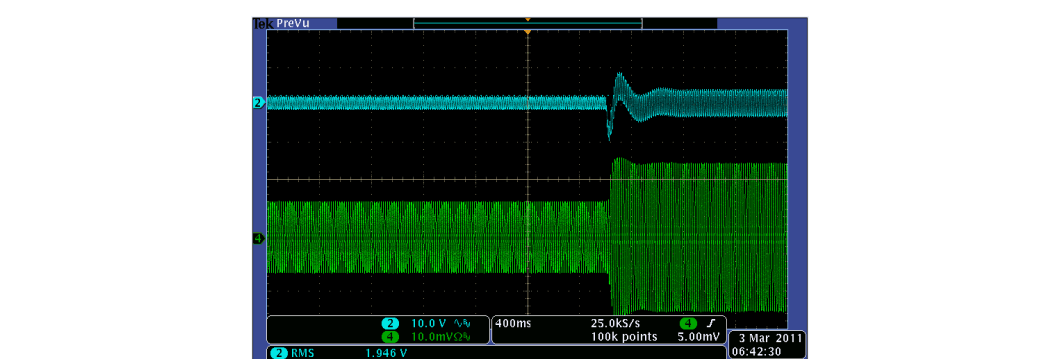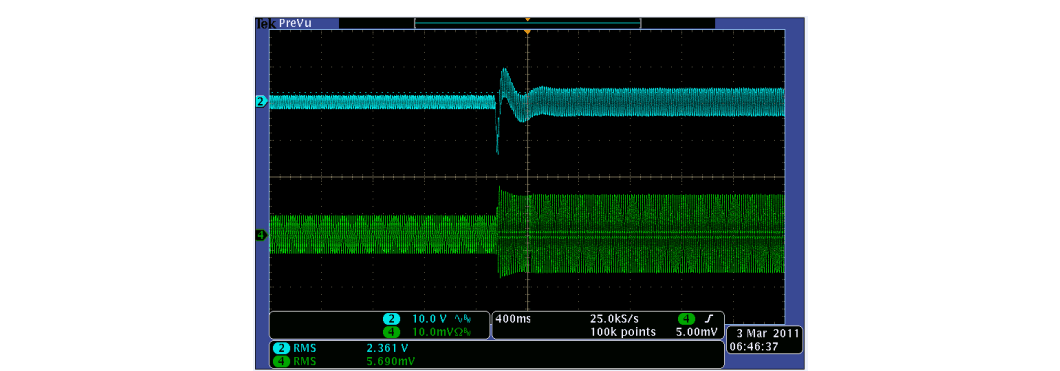TIDU312A May 2014 – November 2020
- Trademarks
- 1Introduction
- 2Software Overview
- 3Procedure for Running the Incremental Builds
- 4Test Results
- 5References
- 6Revision History
4 Test Results

Ch2 – Vin
Ch4 – lin
Vrms = 220V
Vbus = 400V
Figure 4-1 BL PFC Input Voltage and Current Waveforms (Pout = 300W)
Ch2 – Vin
Ch4 – lin
Vrms = 220V
Vbus = 400V
Figure 4-2 BL PFC Input Voltage and Current Waveforms (Pout = 150W)
Ch2 – Vin
Ch4 – lin
Vrms = 220V
Vbus = 400V
Figure 4-3 BL PFC Input Voltage and Current Waveforms (Pout = 60W)
Ch2 – Vbus
Ch4 – lin
Vbus = 400V
Load Step 150W ~ 300W
Figure 4-4 BL PFC DC Bus Load Transient Response (Vrms = 110V)
Ch2 – Vbus
Ch4 – lin
Vbus = 400V
Load Step 150W ~ 300W
Figure 4-5 BL PFC DC Bus Load Transient Response (Vrms = 220V)